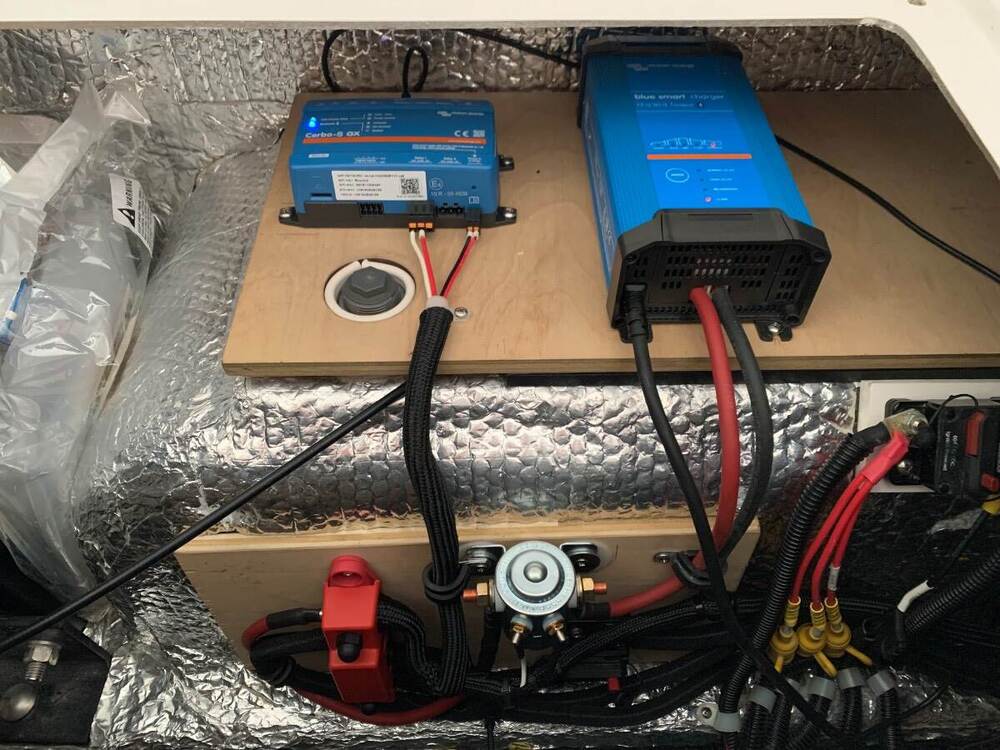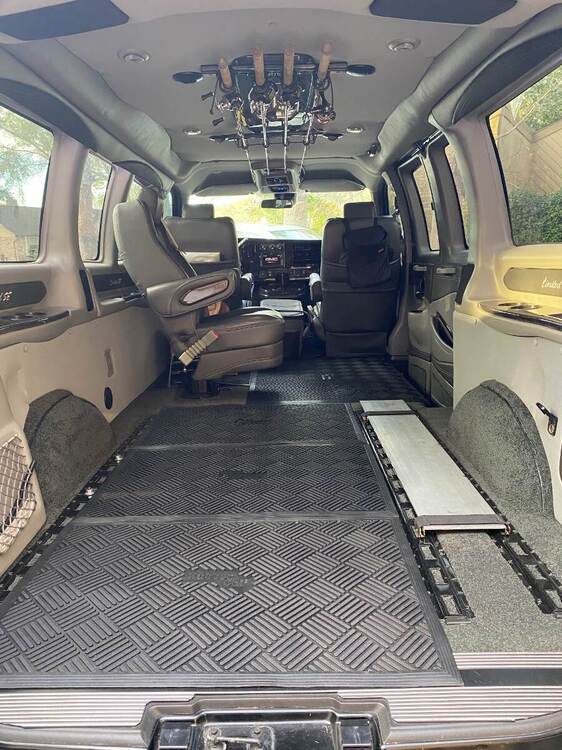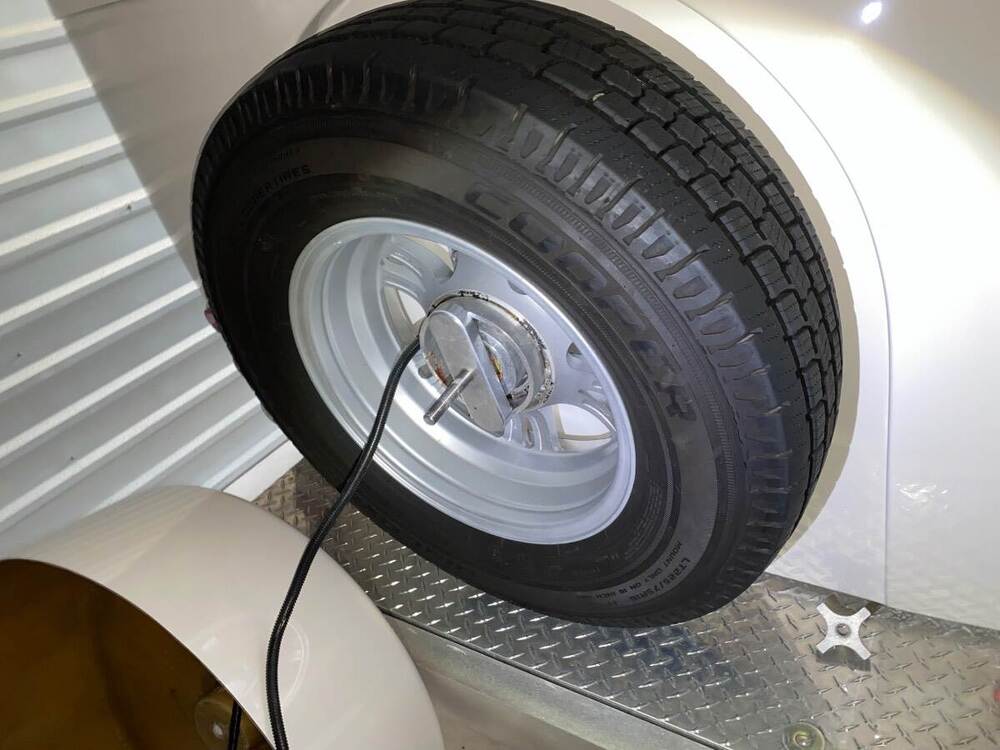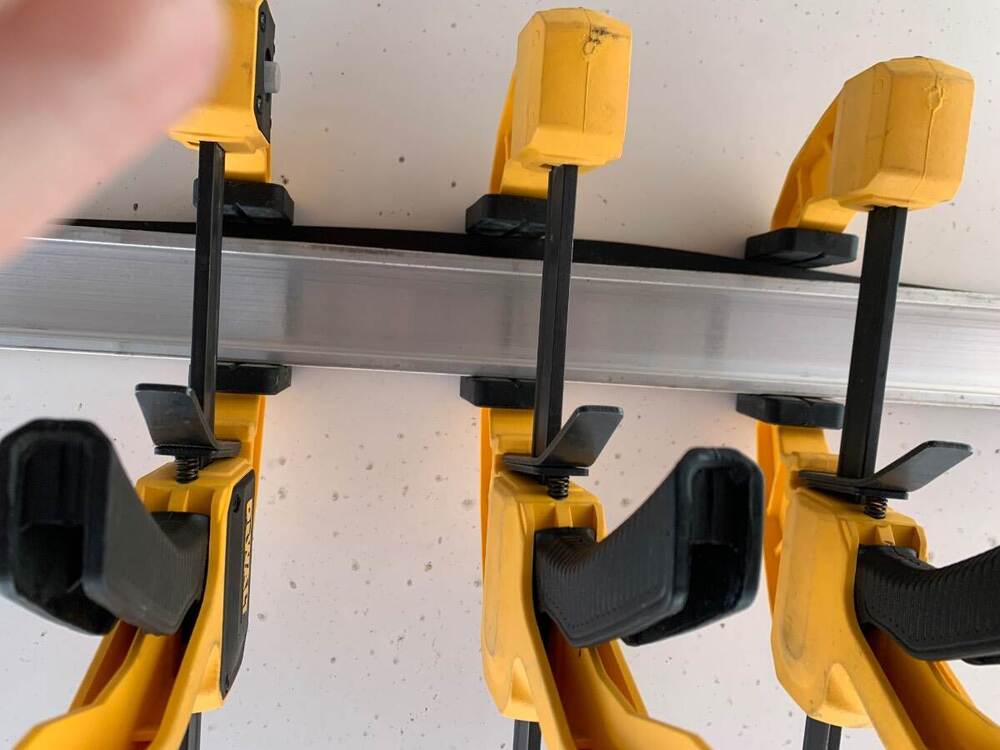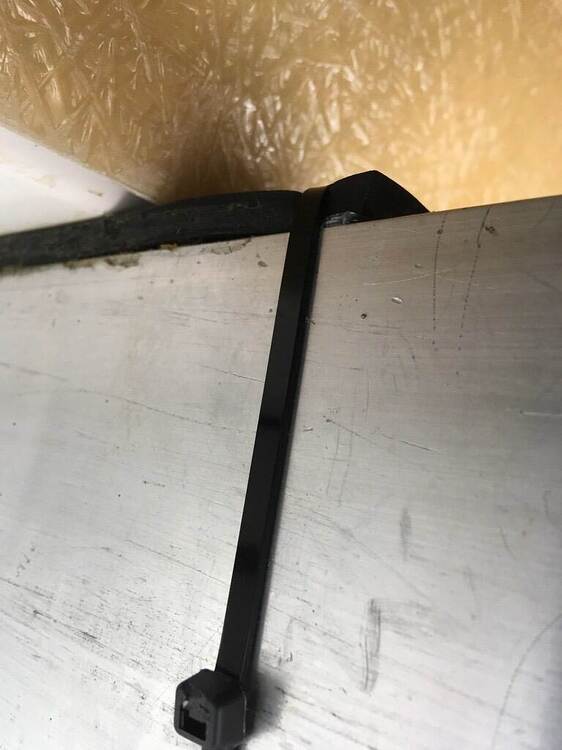-
Posts
1,136 -
Joined
-
Last visited
-
Days Won
35
Everything posted by Ronbrink
-
Yes, that would be golden IMO; just be sure to confirm the heater is working in winter conditions (LFP truly above freezing temp). I like to discharge the battery bank to 50% SOC if time allows, otherwise at least slightly below 75% SOC. Reason being that I have two chargers, the Xantrex 2000W inverter/charger and a dedicated Victron Blue Smart charger; 80A and 30A charge rates, respectively; 110A combined charge output. The Victron charger is triggered by a Victron Cerbo set to activate it when 75% SOC occurs. Incidental discharges above the 75% SOC threshold are serviced solely by the Xantrex charging component to maintain 100% SOC.
-
Although there are varied recommendations among LFP makers, in general it is not good to maintain 100% SOC for extended periods of time in storage; extended meaning three months + with no demand. In this instance, isolating the batteries and storing at 50% SOC seems an acceptable practice. Personally, I continually maintain 100% SOC year-round given the fact that I routinely go to the Cow Barn to check on things and make it a practice to exercise the LFPs. During summer visits the air conditioner is ran off the batteries and likewise that unit’s heat pump during cooler weather; cycling the battery bank in this manner is good ‘care and feeding’! I’m fortunate to have enclosed storage with electricity, which is adventitious in this battery management scheme. That said, my COW is turned out often and thus, rarely sees ‘extended’ periods of nonuse; always ready to search greener pastures!
-

What is Towing "Level" and Does It Matter?
Ronbrink replied to Sam Heumann's topic in Towing an Oliver
And his first post got hijacked with good intentions! We all learn from the wandering and rambling of forum member’s comments, at least I do! -
For the first time since incorporating the two cargo boxes in the Savana 15 months ago, I had reason to clear the cargo bay yesterday to haul a 75” QLED TV. I generally keep one box in the van as a trunk, while the other is stowed at the Cow Barn full of camping gear in readiness. For perspective, distances from the rear doors to the rear passenger seat is 6’ and to the back of the two front seats is 10’. I snapped a couple of pics this morning of the new rubber mat layout and to illustrate the unhindered spacious area of the cargo bay. The second and third 24”x36” floor mats from the rear are positioned in the footprint of each box when carried and fit perfectly atop the boxes for added protection. The aluminum plate is a runway for our folding e-bikes followed by a few extra cargo strap attachment points to secure the Dometic fridge/freezer when camping or other miscellaneous cargo, as needed. EDIT: Went back to the Cow Barn to reload the ‘trunk’ cargo box and snapped a pic of it positioned with the rubber mat on top. Ignore my foot reflection as I lounged in the rear passenger captain’s chair enjoying a beer!
-

What is Towing "Level" and Does It Matter?
Ronbrink replied to Sam Heumann's topic in Towing an Oliver
Hope it works out well for you! My spare is part of the routine wheel rotation and thus, kept at the same pressure as the running tires. If fitment in the spare tire housing is an issue, deflating to a lower pressure may help. -

What is Towing "Level" and Does It Matter?
Ronbrink replied to Sam Heumann's topic in Towing an Oliver
I went to the Cow Barn today to “verify size” and obtain photo documentation to add credence to my former statement: “My 2020 OLEll tires are all the same, Cooper Discoverer HT3 LT225/75R16.” Upon physical inspection my findings are conclusive, the four trailer tires and spare tire are the same size; something I already knew, but compelled to check as part of the verification process. However, I can’t explain away the spare tire housing discrepancy! -
A more expensive, but much better option. I have these on the two mounted 30# tanks and a spare 30# tank carried with; the gauge accurate, purge feature very useful and emergency shutoff essential!
-

What is Towing "Level" and Does It Matter?
Ronbrink replied to Sam Heumann's topic in Towing an Oliver
Understood, I was actually making reference to your previous statement: “we have found that a pair of Bilstein 5100's shocks and air bags on the rear axle have made a wonderful improvement in our driving experiences.” My air bag pressures are the 25 and 35 psi preferences for non- and towing instances. Since we don’t off-road, the trailer tires are currently maintained at 55 psi, but giving thought to lowering them to 50 psi; still hesitant to go any lower even though you and others do 40-45 psi on paved roads. -

What is Towing "Level" and Does It Matter?
Ronbrink replied to Sam Heumann's topic in Towing an Oliver
Good point about the different tire diameters. I’ve always viewed the 23.5” as a ‘ballpark’ height to shoot for when fitting a ball hitch to a TV. I prefer hitches with one-inch increment for adjustment to better reach a targeted height and then the rear air bags to dial in the best towing level. I find 25 psi and 35 psi with my Air Lift LoadLifter setup for a good ride and tow, respectively. I also installed Bilsteins on the Savana after reading your praise on them, huge improvement! -

What is Towing "Level" and Does It Matter?
Ronbrink replied to Sam Heumann's topic in Towing an Oliver
My 2020 OLEll tires are all the same, Cooper Discoverer HT3 LT225/75R16. -
I suggest you replace the breaker with a quality Blue Sea Systems 285-Series Surface Mount component.
-

What is Towing "Level" and Does It Matter?
Ronbrink replied to Sam Heumann's topic in Towing an Oliver
I think Oliver recommends the distance from ground to top of ball at the Bulldog coupler to be 23.5”. -

Shock absorbing material on steps bracket coming out
Ronbrink replied to Randy's topic in Mechanical & Technical Tips
I’ve had rubber migration at the steps, A-frame and undercarriage cross beams; inspection of these areas is part of my routine maintenance. I have used slight pressure on the underbelly to provide necessary clearances by way of a jack and a 2x6 to distribute force on the fiberglass, then clamps used to further restoration. The strips of rubber at the cross beams have a screw at each end and thus, will not fall out completely. I was able to use zip ties at the A-frames where the rubber protrudes beyond the chassis to keep it in place. Unlike the aforementioned cross beam rubber strips, the step strips have no screw securement and can come out. The ones shown in the beginning photos at each side of the steps are the most difficult to reposition and secure. -

Water pump not working -- problem solved -- FYI
Ronbrink replied to ZLarryb's topic in Mechanical & Technical Tips
You are correct, I have used that technique upon occasion when a more critical application of pressure is required for a fix. Thanks for your insight! -
I have TST cap sensors on the four trailer tires and four TV tires, as well. Up to a couple months ago, only trailer-related tire issues have occurred requiring attention to flats or valve stem leaks in the past five years. However on a recent trip a slow leak was detected at a rear tire on the TV, a screw puncture was found. My TV has tire pressure readout, but no alert system and thus, so thankful I had sensors installed. I was able to repair the tire before further damage incurred due to under-inflation in tow.
-

Greenlee Turbro 13.5k Inverter AC / Heatpump install.
Ronbrink replied to CRM's topic in Ollie Modifications
I assure you this was as painful to read as it likely was for you to post! Sorry you weren’t able to enjoy the upgrade experience and now an Amazon return missed opportunity! -
This is more for general information than anything else: I opted for no solar in my 2020 OLEll, but told it was prewired if ever an installation was wanted. I located a bundle of wiring inside the street side hatch on the wheel well next the battery box. I’m not sure of the year model that Oliver discontinued such prewiring. There’s also aluminum mounting plates formed in the roof’s outer shell to accommodate panel installation.
-
Oops, I stand corrected again! I assumed the listings were in alphabetical order, but there it is….Turbro! I’m even more hopeful now that things can be worked out.
-
@CRM - I have since learned there is a QUIETSIDE Turbo air conditioner to which Cielo is referencing in their compatibility link and thus, I stand corrected. You were correct in your questioning, Turbro is not in the Cielo database. Hopefully the tech support you contacted can provide a viable alternative in programming a new template for the Turbro. Good luck with that endeavor!
-
Another thought, try to find out if the Turbro remote listed by Cielo is compatible with your Turbro inverter a/c model.
-
Bummer! I referenced the aforementioned Cielo link to check remote compatibility for Turbro branded units (the link actually shows ‘Turbo’, but certain that is in error) and saw only one remote model (being either Celsius or Fahrenheit specific) listed, wherein there are 32 remote models listed for Pioneer products. When contacting support you may want to ask, if by chance, there is a universal aftermarket remote available that is known to work in a Turbro/Cielo application.
-
Nor I and furthermore, I honestly believe the Cielo to be much smarter than me when it comes to air conditioners!
-
I remain optimistic! Prior to total shutdown (“killing power with every cycle”), the compressor first turns off when a temperature set point is reached, the air supply fan will continue to run thirty seconds or so before turning off, the condenser fan will continue to run an additional thirty seconds, then the unit is totally powered off by the Cielo. I think this staged shutdown is by design, perhaps to prevent perceived damage(s); by no means a sudden ‘hard stop’ of all said components at once. At a predetermined set point the compressor will turn back on as power is restored via the Cielo, followed by startup of the air supply fan; by no means simultaneously and thus, allowing time for the compressor’s soft start device and respective run capacitors to engage the individual start sequences and not overload the unit’s control system. Once again, all by design. This is why it is highly advised not to use a circuit breaker to cycle an A/C off and on to help regulate temperature and/or humidity issues, in which a “Cold Started” situation will occur and likely cause damage(s) to said components. I’m a solid year in and counting!
-
In an effort to address @Geronimo John’s concern, “So the real question that it does not answer is: Was the start/stop impact of the Cielo system cause any harm to the A/C in the process?”. Based on findings thus far, the Cielo can be programmed the turn off the supply air fan soon after shutdown of a compressor’s normal operating cycle. In this process, AC power to the A/C unit is totally turned off. The Cielo will then cycle the compressor back on in typical fashion, at which time AC power is immediately restored and the supply air fan subsequently turns on in sync. It is my understanding that use of the Cielo in this manner does not significantly alter the normalcy in compressor cycling and thus, is of no detriment to the compressor; and turning the supply air fan on and off as described, only mimics an A/C operating in AUTO Mode, wherein the supply air fan runs in sync with the compressor in both cooling and heating settings. However, if an A/C unit is prone to short cycling (for varied reasons), continuance can lead to wear and tear, and premature failure of components.
-
I think it is important to run the vent fan when showering, as well as post showering for a while with the door closed, to remove as much moisture possible; even in cold weather conditions. While running with the door closed, the vent fan creates a negative pressure within the wet bath and draws heated air in through the vanity HVAC duct and any installed lower vent from within the under dinette area for that matter. Once the wet bath is completely dried, the vent fan can be turned off and door left open, whereby conditioned air entering the under dinette area via an installed lower vent is less likely to cause adverse effects and possibly improve return air ventilation.


